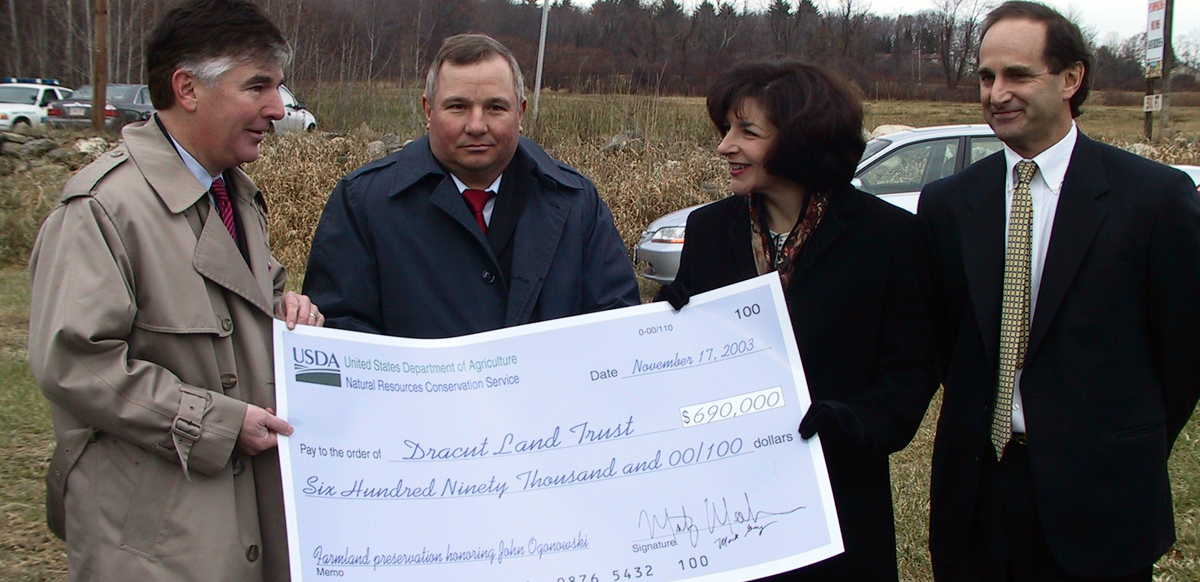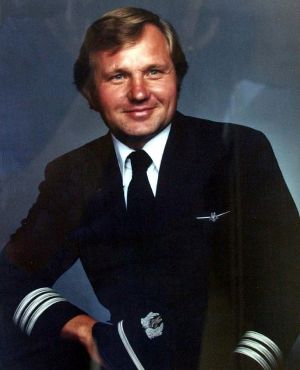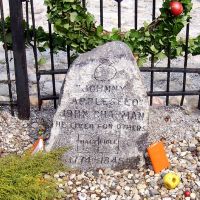Primary Source
Bob Oakes, Anchor [WBUR radio]: In July of last year, two producers from the NPR program "Living on Earth" came to John Ogonowski's farm to interview him about the immigrant farming project.
[John] Ogonowski: My family, they're—they're all immigrants. They came over here and had to—had to start farming over here, so it was—it sounded like a good chance to get—get some people farming who were farmers in their country before and now they're—they're living in—in a city environment (sic). So they—they had the desire to—to farm and we had the land, so we got together.
Reporter: It sounds like it was really easy, but I know that you're actually doing a lot for them.
Mr. Ogonowski: Yeah, it's probably a break even for me. I don't make money on it, I don't lose money on it, and as long as I have a little excess land available, I'll continue to do it.
Oakes: What Ogonowski didn't say in this interview is that he rarely collected the $300 per acre rent. He purchased supplies for the farmers without asking to be reimbursed. He plowed and harrowed their fields into perfect rows.
Project director Hugh Joseph says there was virtually no end to what he would do for them.
Mr. Joseph: Providing training and technical assistance to the farmer, or helping to get a shed put up, or putting up irrigation, or getting the greenhouse in order, or going and getting parts and supplies, or getting the machinery fixed for them and telling them where to market, you know, all of these little bits of information, now—now it's staff that provides that because he's not there.
Oakes: Hugh Joseph says the project may have eventually developed a staff anyway to relieve some of John's workload, but his death forced it to grow up very quickly. Now a farm manager comes to the plots to give the Cambodian growers the help that John used to provide, and as with any work that out lives its originator, there are growers now tending John's land who never knew him. . . .
Mrs. Peggy Ogonowski: Having the Cambodian farmers here is a great source of comfort to me.
. . . It was a program that John very much enjoyed being a part of, and we've received a lot of help in keeping it ongoing, and I think that it will add to his legacy that we keep the Cambodian farmers working here and that we're helping attain more acreage for them and that the program is growing . . . I was glad to continue it. I just feel terrible that they've lost their mentor. I can't mentor them. He was the farmer. He had all of the knowledge. He's the one that understood about growing cycles, about pesticides. I don't have any of that knowledge.
Oakes: But it wasn't just John's knowledge that the Cambodian farmers appreciated about him. John was a friend to them. . . . John was a humble man. He never sought recognition for what he did. Six weeks before his death he told NPR that what motivated him was his love of the land.
Mr. Ogonowski: I think once a person is a farmer, they're a farmer for life. They're hooked. I don't know if the children of these farmers are going to be so active in it, but they may be because these Cambodians, they bring their whole families out here. You'll see the kids out there weeding and picking the crops, so they may take a liking to it.
[Reporter]: Do you have children that will continue in farming, John?
Mr. Ogonowski: I hope so. I have three daughters, and they're good workers. They pick blueberries and sell pumpkins, and hopefully they'll continue so I can retire.
© 1995–2005 Tufts University






